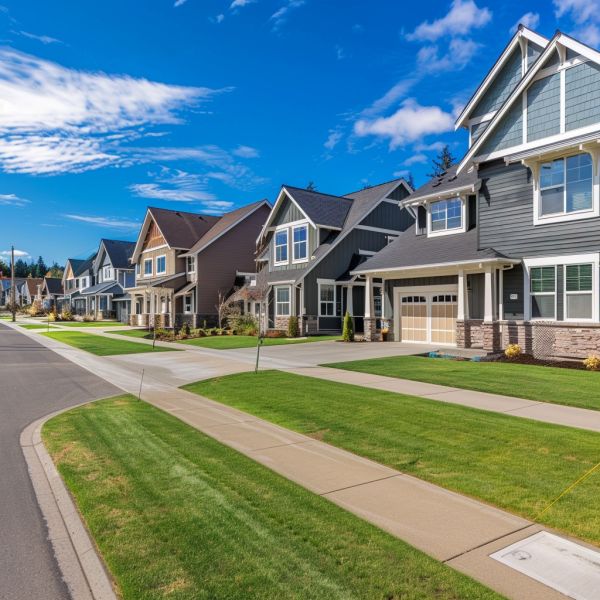Climate Change’s Influence on Home Insurance:
Climate change is a pressing issue that has significant implications for various aspects of our lives, including home insurance. As extreme weather events become more frequent and severe due to climate change, the risk of property damage and loss increases. Home insurance providers must adjust their policies and premiums to account for these heightened risks, leading to changes in coverage options and pricing structures.
Increased Frequency of Natural Disasters:
One of the most significant impacts of climate change on home insurance is the increased frequency of natural disasters such as hurricanes, floods, wildfires, and tornadoes. These events can cause widespread damage to homes and properties, resulting in significant insurance claims payouts for insurers. As a result, insurance companies may raise premiums or impose stricter coverage limitations to mitigate their financial risk.

Rising Costs of Home Repairs and Rebuilding:
Inflation, coupled with the increasing frequency of natural disasters, has led to a rise in the cost of home repairs and rebuilding. As construction materials and labor become more expensive, insurers may adjust their coverage limits and deductibles to reflect these higher costs. Homeowners may find themselves facing higher out-of-pocket expenses for repairs and replacements, particularly in areas prone to extreme weather events.
Impact on Premiums and Deductibles:
The combination of climate change and inflation has led to an overall increase in home insurance premiums and deductibles. Insurers must factor in the higher likelihood of property damage and the rising costs of repairs when setting premium rates. Additionally, insurers may raise deductibles to offset their increased financial risk, shifting more of the financial burden onto policyholders in the event of a claim.
Changes in Coverage Options:
As the risk landscape evolves due to climate change and inflation, home insurance providers may adjust their coverage options to better align with emerging risks. This could include offering specialized coverage for specific types of natural disasters or implementing new policy features to address evolving needs. Homeowners should review their insurance policies regularly to ensure they have adequate coverage for their unique circumstances.
Importance of Mitigation and Preparedness:
In light of the increasing risks associated with climate change and inflation, homeowners must prioritize mitigation and preparedness measures to protect their properties and reduce insurance costs. This may include investing in home improvements to make properties more resilient to extreme weather events, such as reinforcing roofs, installing storm shutters, and elevating structures in flood-prone areas.
Role of Government Policies and Regulations:
Government policies and regulations also play a crucial role in shaping the home insurance landscape in the face of climate change and inflation. Regulatory measures aimed at promoting resilience and mitigation, such as building codes and zoning regulations, can influence insurance requirements and pricing. Additionally, government-funded disaster relief programs may provide assistance to homeowners affected by natural disasters, impacting insurers’ claims payouts and risk assessments.

The Need for Sustainable Solutions:
Addressing the impacts of climate change and inflation on home insurance requires a multifaceted approach that prioritizes sustainable solutions. This includes investing in renewable energy sources, implementing green building practices, and promoting community resilience initiatives. By taking proactive steps to mitigate climate risks and adapt to changing conditions, homeowners can reduce their vulnerability to property damage and insurance-related costs.
Potential for Market Disruptions:
Climate change and inflation have the potential to disrupt the home insurance market, leading to changes in industry dynamics and consumer behavior. Insurers may face increased competition, regulatory scrutiny, and pressure to innovate in response to evolving risks. Meanwhile, homeowners may seek out alternative insurance options, such as parametric insurance or peer-to-peer insurance, to better align with their needs and preferences.
The Role of Data and Technology:
Advancements in data analytics and technology are empowering insurers to better assess and manage climate-related risks in their underwriting and pricing processes. By leveraging sophisticated modeling techniques and real-time data streams, insurers can more accurately predict and mitigate the impacts of climate change on home insurance portfolios. This enables them to offer more competitive rates and tailored coverage options to policyholders.
The Importance of Transparency and Communication:
Amidst the evolving landscape of climate change and inflation impacts on home insurance, transparency and communication between insurers and policyholders are paramount. Homeowners should actively engage with their insurance providers to understand changes to their policies, coverage options, and premiums. Likewise, insurers must communicate effectively with policyholders about risk factors, mitigation strategies, and available resources to help homeowners make informed decisions.
Collaboration Across Stakeholders:
Addressing the complex challenges posed by climate change and inflation requires collaboration across stakeholders, including insurers, government agencies, policymakers, homeowners, and community organizations. By working together to develop innovative solutions and implement effective mitigation measures, stakeholders can build more resilient communities and reduce the impacts of climate-related disasters on home insurance affordability and availability.

Long-Term Planning and Adaptation:
As climate change continues to unfold and inflationary pressures persist, long-term planning and adaptation strategies are essential for homeowners and insurers alike. This may involve revisiting insurance policies regularly to ensure they provide adequate coverage for evolving risks, as well as investing in resilience measures to protect properties and mitigate losses. By embracing a proactive and forward-thinking approach, stakeholders can better navigate the challenges of an increasingly uncertain future.
Conclusion:
In conclusion, the intersection of climate change and inflation has profound implications for the home insurance industry, impacting premiums, coverage options, and risk assessments. As extreme weather events become more frequent and severe, insurers and homeowners must adapt to the evolving risk landscape and take proactive steps to mitigate vulnerabilities. By prioritizing resilience, sustainability, and collaboration, stakeholders can work together to build more resilient communities and ensure the long-term viability of the home insurance market in the face of climate-related challenges.
